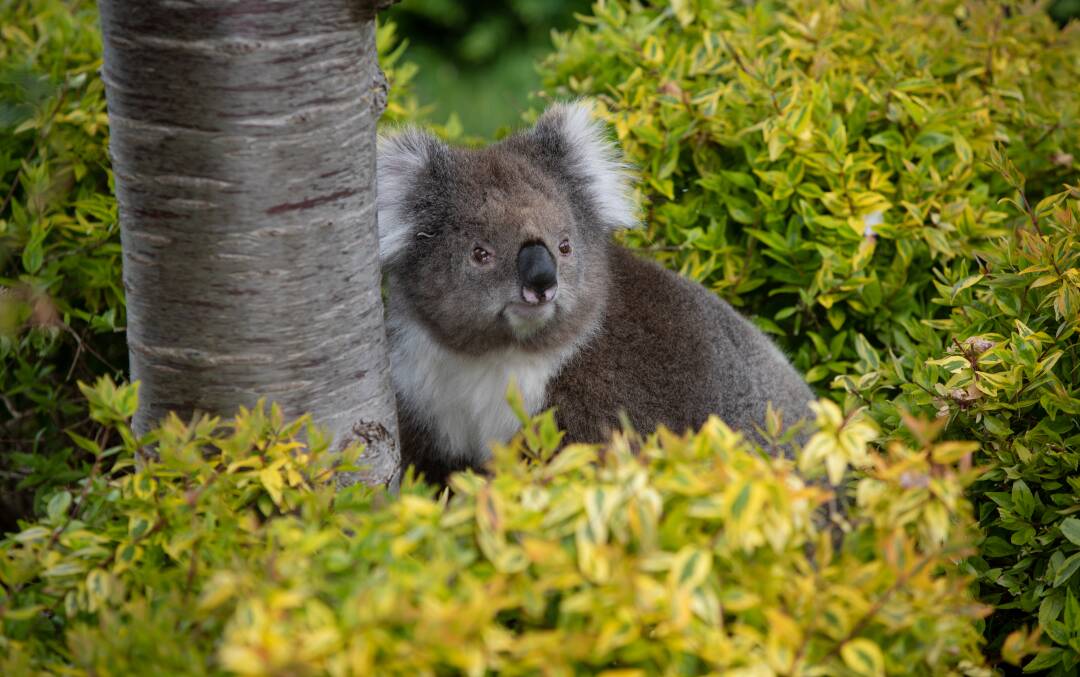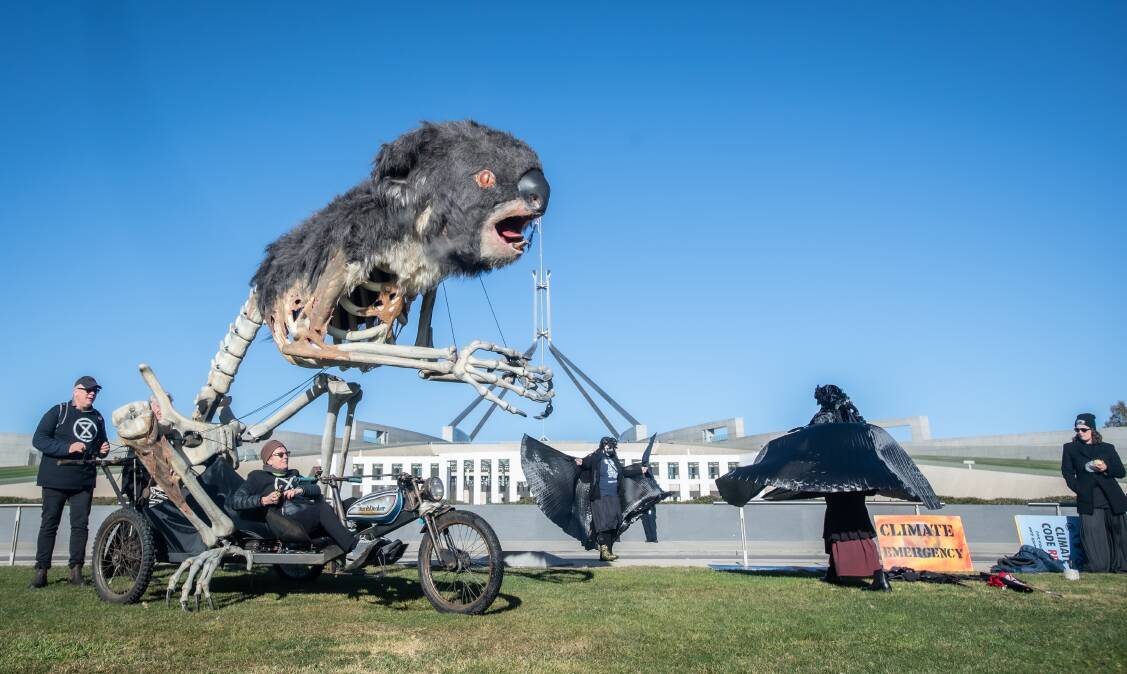
TWO years have passed since former National Party leader and deputy premier John Barilaro threatened to "blow up the Coalition" over a Liberal Party koala protection policy.
Both Mr Barilaro and the premier at the time, Gladys Berejiklian, have gone from the political scene.
But the environmental pressures that have helped decimate the population of one of Australia's most iconic and instantly recognisable marsupials remain. Despite a plethora of studies and (presumably) well-intentioned political initiatives, the extinction clock, it seems, is ticking faster than ever.
At Coffs Harbour on Saturday, a summit meeting of scientists, conservation groups and concerned citizens laid down the gauntlet to all political parties to take the dramatic corrective action needed to save this state's wild koala populations.
The land clearance and other human activities threatening koalas do not stop at the NSW borders, of course, as shown by the accompanying photo of a koala taking refuge in the southern Victorian town of Warrnambool.
As Damon Cronshaw reported yesterday, Saturday's conference heard a doomsday prediction from former Liberal MLC Catherine Cusack, that koalas will be extinct in the wild by 2050 unless dramatic action is taken to reverse the present long-standing decline.
Koala-specific policies are needed to help protect specific and identified populations, especially in areas - such as Port Stephens - where once prolific numbers of animals are forced out of their natural habitat by housing-related land clearance.
But the decline of the koala, more generally, must be seen as a single link in a chain - or as a microcosm of a broader degradation of the natural landscape - that is nothing less than a consequence of the way that we as modern Australians live our lives.
It is an uncomfortable fact of history that millions of koalas were hunted and killed for fur in the first 150 years years of white settlement.
Legislation to protect them nationally was enacted in 1937, yet their numbers have fallen dramatically in the ensuing 85 years.
Nobody, it is safe to say, wants to see this existential decline continue.
Saturday's conference heard political argument over who was doing the most to save the species, but if we want to guarantee its future, we must all put the needs of the koala before the wants of human comfort.
ISSUE: 39,741








